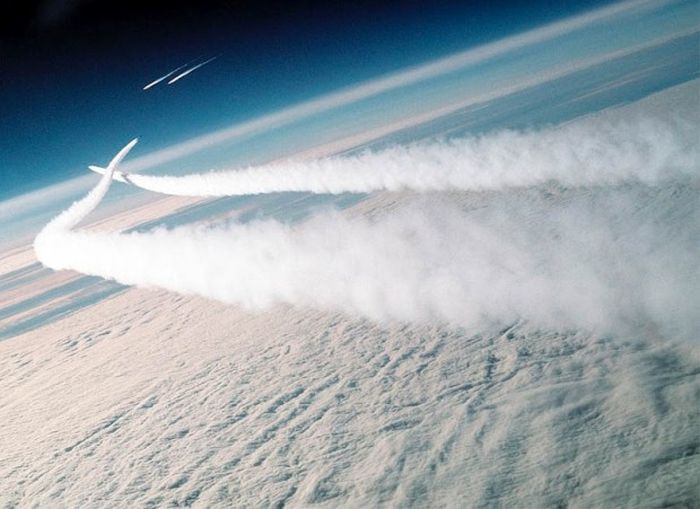|
|
Contrails, Condensation Vapour Trails
|
The main products of hydrocarbon fuel combustion are carbon dioxide and water vapour. At high altitudes this water vapour emerges into a cold environment, and the local increase in water vapour can raise the relative humidity of the air past saturation point. The vapour then condenses into tiny water droplets which freeze if the temperature is low enough. These millions of tiny water droplets and/or ice crystals form the contrails. The time taken for the vapour to cool enough to condense accounts for the contrail forming some way behind the aircraft's engines. At high altitudes, supercooled water vapour requires a trigger to encourage deposition or condensation. The exhaust particles in the aircraft's exhaust act as this trigger, causing the trapped vapour to rapidly condense. Exhaust contrails usually occur above 8,000 m (26,000 ft), and only if the temperature there is below −40 °C (−40 °F).
Condensation from decreases in pressure
As a wing generates lift, it causes a vortex to form at each wingtip, and sometimes also at the tip of each wing flap. These wingtip vortices persist in the atmosphere long after the aircraft has passed. The reduction in pressure and temperature across each vortex can cause water to condense and make the cores of the wingtip vortices visible. This effect is more common on humid days. Wingtip vortices can sometimes be seen behind the wing flaps of airliners during takeoff and landing, and during landing of the Space shuttle.
|
|









